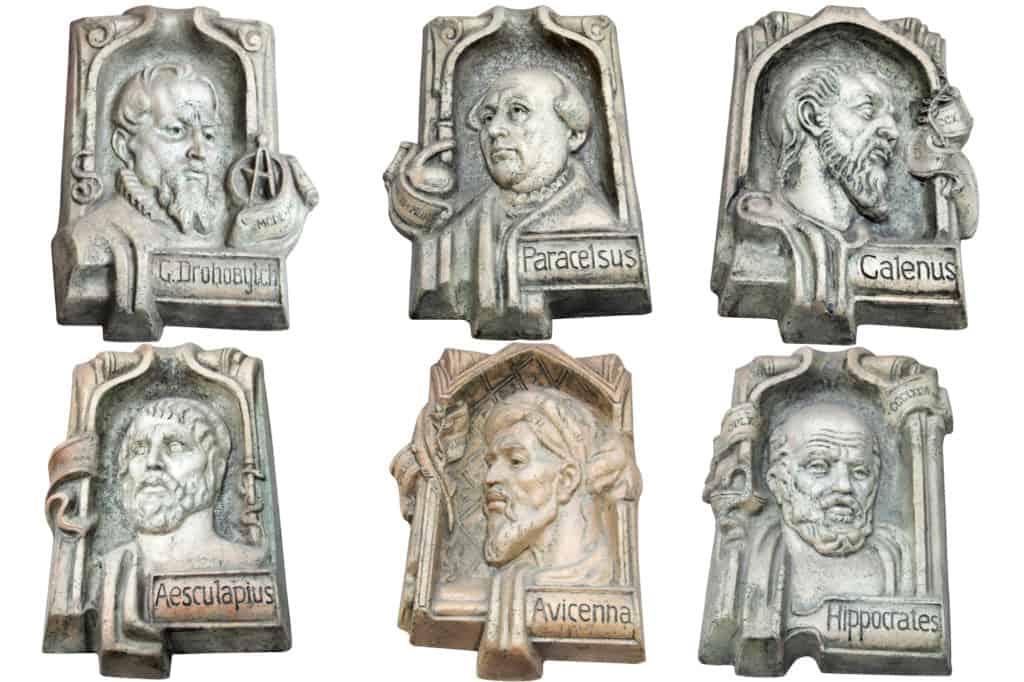
Recently I received an e-mail from a Swedish friend who had being digging into some German literature referring to Hippocrates, and he translated some of it for my benefit.
Emil Wagner, writing in 1962, asserts that Hippocrates saw:
“all illnesses to have their reason in a wrong against the nature-directed life”, and “the knowledge of healing/Heilkunde/ has therefore the task to return the sick to a life according to nature. ….The doctor is therefore only the servant of the correctly understood nature. It is his task to support the normal process of healing with his medical means (Physiatry). The real healing factors are the forces and the disposition/Veranlagung/ of the body. Therefore his treatment relies less on application of drugs than on use of baths, air changes, massage and gymnastic exercises.” Emil Nack-Wilhelm Wägner: HELLAS – Land und Volk der alten Griechen, Verlag Carl Ueberreuter Wien-Heidelberg 1955, 1962 p 294
This got me thinking. It is of course a truism that we are healing and restoring ourselves all the time (via sleep, cell turnover, various repair processes etc.). But, given the modern perspective of the clinician as expert, knowledgeable, powerful, and equipped with sophisticated theories, models, paradigms, scientific evidence and all the derived technologies, it is possible to lose sight of, or reverence for, the innate healing powers or tendencies of our patients, for the ‘normal processes of healing.’
It is of course a truism that we are healing and restoring ourselves all the time
There is a trajectory towards degeneration and death in the processes of life, but there is also a trajectory towards healing. And as clinicians we meet persons at different points in that continuum. Very often we meet them in a crisis of deterioration or sudden onset and decline. In those circumstances our expert technologies shine spectacularly. Putting the brakes on a serious or acute declining process can be the first phase in enabling the patient’s own healing and homeostatic capacity to be restored and mobilised towards achieving a healthy equilibrium. In these acute situations the ‘healer’ or the agent of healing is very interventionist. Despite the need for intervention there always remains, in and behind the interventions, a patient’s capacity to stabilise, recover, or heal.
But in other places in the spectrum between vitality and mortality the healer role may be quite different. For example, it is in the very nature of many chronic diseases that the interventions available to us do not work well enough to cure or restore normal function or wellness. And many of the treatments have significant side effects. While whole person approaches are relevant to all care, it is in chronic disease that they are clearly relevant. Faced with a severe chronic disorder requiring powerful and perhaps toxic drugs, and where symptoms are poorly controlled and function impaired or threatened why would we neglect or forego attention to the dimensions of story, family relationships, and all the other elements that may act as pressures towards chronicity?
In these situations I become a healer in a number of different modes. Frequently I am an educator, one who talks about the mindbody connections, about the role of life experience and story. Just this simple activity is enough for some people to go off and make things different. Sometimes, I see myself as a kind of ‘midwife’ attending the ‘delivery’ (which may be simple, difficult, or even stillborn) of the person’s new movement and healing as they realize what I am saying and struggle to make sense of it. Sometimes, I am simply there at ‘conception’, when the idea is sown that chronic illness may not be inevitable, that they may not have this illness for life, that attention to the ‘story’ makes some healing conceivable and possible. I might sow that seed, and another clinician may get to accompany the person on the journey to ‘delivery’.
Continuing the metaphors, beyond midwife and educator I may be like a hired rough-country guide, a gardener fertilizing the soil, a planter of seeds, a constant assistant, a traffic cop pointing to a useful detour, a benign authority figure, an information kiosk, or a ‘safe base’ to return to. The usefulness of metaphors is that they remind us that as we occupy our healer roles we are being experienced in a number of possible ways.
In whatever way we are seen or experienced, it is crucial that we remember that, ultimately, patient and clinician are two persons, together, sharing the same humanity. And we are ‘the servants of the correctly understood nature’, especially the nature of persons as wholes, and illness as a multidimensional reflection of the whole. I concur with Hippocrates, that understanding this, and responding appropriately, we can help mobilise a patient’s healing resources. The mystery remains—healing is a mysterious generative force within us all. Clinicians who are healers are always working with that.